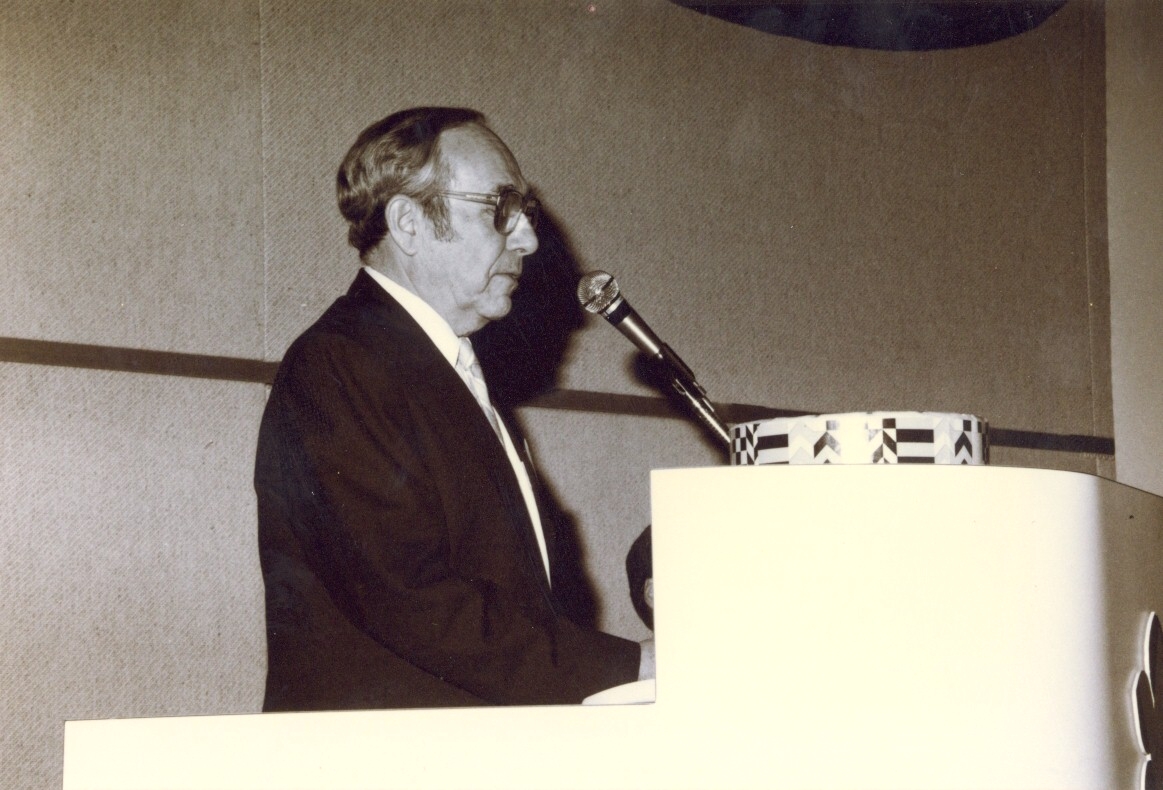We’d like to take a moment to remember Dr. Bruce Falls, a titan of Ontario’s conservation community who passed away in his 100th year.
Amidst our reflections on Bruce’s extraordinary contributions to conservation, we recognize the profound influence he had over decades. His journey from the halls of academia to the forefront of environmental stewardship underscores a lifetime devoted to understanding, appreciating and conserving our natural world.

Dr. Bruce Falls was the chair of our Board of Directors during the years of transition to a national bird conservation organization.
Dr. Bruce Falls earned his PhD in Zoology from the University of Toronto after serving in the air force during WW2. He later pursued postdoctoral studies at Oxford University, where his interest shifted towards bird behavior, leading to pioneering research in playback techniques for studying bird behaviour.
From his early work as a park naturalist in Algonquin Park to his role in founding key conservation organizations, Bruce’s legacy continues to shape the landscape of environmental stewardship.
As president of the Federation of Ontario Naturalists (now Ontario Nature) and a founding member of the Nature Conservancy of Canada, Bruce’s influence on conservation was profound. Among the first Honorary Directors of our Long Point Bird Observatory (LPBO), Bruce is recognized in LPBO’s inaugural annual report for contributing to the work of the Observatory. Ricky Dunn, one the founders of LPBO says, “his roles in the development of LPBO/Bird Studies Canada, FON/ON and Nature Conservancy all attest to a belief that good organizations could accomplish great things.”
As a long-standing Board Member, Bruce played a pivotal role in the evolution of LPBO into Bird Studies Canada. Michael Bradstreet, the President at the time, said, “Bruce’s consistent and firm support as Chair of the Board were instrumental in birthing a well-respected national bird conservation organization.”

Ann and Bruce Falls were among the original Birdathon participants raising over $150,000 for bird conservation
Bruce’s unwavering support for initiatives like our annual Birdathon exemplified his dedication to grassroots conservation efforts.
Alongside his wife Ann, they raised an impressive $150,000 for bird conservation, embodying their shared commitment to helping birds.
But perhaps Bruce’s greatest legacy lies in the lives he touched and the minds he nurtured. As a mentor, his influence extended far beyond academic circles. Michael Bradstreet shares that Dr. Falls had an “enduring influence on undergraduates like me, on his grad students and post docs, and most importantly I think on two organizations he helped found: Birds Canada and the NCC. In his quiet way he has created an amazing legacy for conservation in Canada.”
Bruce and Ann were also long-time contributors to the Canadian Lakes Loon Survey monitoring near Algonquin Park. Dr. Doug Tozer, Director of Waterbirds and Wetlands, shares, “Bruce was a strong, exemplary force for protecting and conserving wildlife. Whenever I bumped into him at the Wildlife Research Station in Algonquin or while out birding, he always took the time to chat and learn about what I was up to. His long list of accomplishments and his kind mentorship will continue to be a source of inspiration for me and many others for a long, long time.”
As we reflect on the legacy of Bruce Falls, we are reminded that true conservation heroes are measured not only by their accomplishments but by the lasting impact they leave on the world around them. We hope his legacy continues to inspire future generations to steward our natural world with the same quiet determination and unwavering dedication.
There will be a celebration of life for Dr. Bruce Falls later this month. The family has indicated that gifts can be made in his memory to Birds Canada, the Nature Conservancy of Canada, or a charity of your choice in lieu of flowers.

